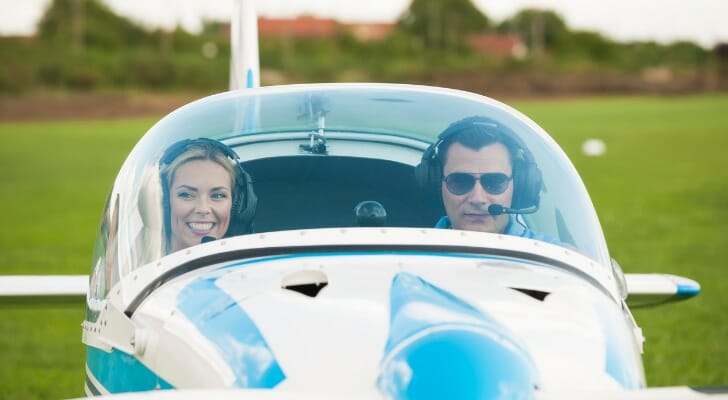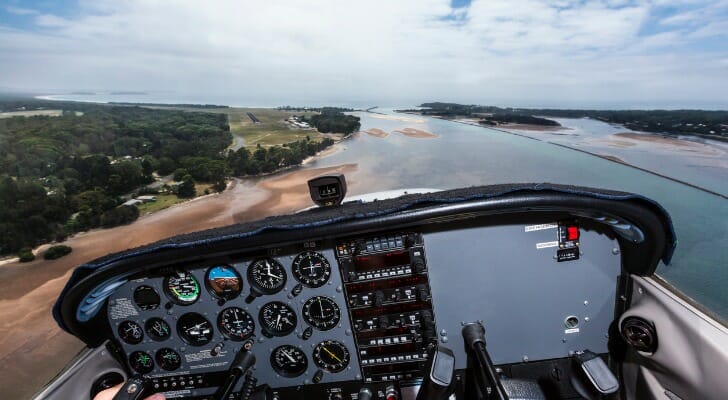How to Buy a Plane: Costs, Upkeep and More
Want to skip cramped commercial airplane seats? Tired of long lines at the airport? Or have you just always dreamed of flying? If so, you may be interested in buying an aircraft and becoming part of the nation’s...Tuesday, March 3rd 2020, 11:11 am
By Dori Zinn
 Want to skip cramped commercial airplane seats? Tired of long lines at the airport? Or have you just always dreamed of flying? If so, you may be interested in buying an aircraft and becoming part of the nation’s general aviation community. While owning a plane is expensive, that doesn’t mean it’s exclusive to the rich and famous. But before you get started in the world of airplane ownership, you need to consider many factors, including costs, maintenance and more.
Want to skip cramped commercial airplane seats? Tired of long lines at the airport? Or have you just always dreamed of flying? If so, you may be interested in buying an aircraft and becoming part of the nation’s general aviation community. While owning a plane is expensive, that doesn’t mean it’s exclusive to the rich and famous. But before you get started in the world of airplane ownership, you need to consider many factors, including costs, maintenance and more.
1. What Type of Certificate or License to Get
If you don’t already have a license to fly then Step One is becoming a pilot, that is, deciding what kind of pilot’s license or certificate you will need. Besides the well-known private pilot’s license, you could get a recreational pilot certificate, which is less expensive than a private pilot’s license and takes less time to get but has some restrictions. For even less money and time you could get a sport pilot certificate, but it also carries the most restrictions on where, when and with whom you can fly.
If you simply aim to be an occasional or weekend flyer who goes up for an hour or so alone or with one other person in a single-engine propeller plane, then a recreational or sport pilot certificate may be adequate. But if you’d like to fly several people and go for longer distances, then a private pilot’s license is the best option.
You’ll need more than a private pilot’s license if you’re planning on piloting a twin-engine propeller aircraft or a jet.
2. Craft Your BudgetWhile making a budget would normally come first, it might be easier to see the average costs of planes that fit your needs before seeing working it into your budget. Seeing what you can afford should be very close to the top of your list.
Buying a plane without knowing how much (or little) plane you can buy can cause you to fall into deep debt or put your other financial investments at risk. When you lay out how much you can afford, consider not only the cost of buying the plane new or used, but also maintenance costs, upkeep, fuel, storage and insurance.
Before you commit to being the sole owner of an aircraft, consider fractional ownership and also renting. These options are less expensive than full ownership but availability can be a problem.
3. Getting a Loan Figure out what size loan you can service. And like buying a home, a pre-approval letter shows you’re not just looking at planes, but have an intent to buy one. You can compare lenders to see which ones offer the best financing, but make sure your credit is in tip-top shape and you qualify for the best financing terms. A pre-approval letter also tells the lender you’re serious about a quick sale and not interested in a long closing.
Figure out what size loan you can service. And like buying a home, a pre-approval letter shows you’re not just looking at planes, but have an intent to buy one. You can compare lenders to see which ones offer the best financing, but make sure your credit is in tip-top shape and you qualify for the best financing terms. A pre-approval letter also tells the lender you’re serious about a quick sale and not interested in a long closing.
Some lenders specialize in aircraft loans. Many of these lenders are members of the National Aircraft Finance Association. For single-engine planes, such as the Cessna 172 pictured above, aircraft lenders will require a minimum down payment of 15% on aircraft built after 1960 and 20% for older aircraft, according to the Aircraft Owners and Pilots Association. AOPA also says loan terms range from 5 to 20 years, with 20 years only available on loans of $75,000 and above, and rates between 4.38% and 7%.
4. Start SearchingWhen it comes to general aviation aircraft your choices are legion. There are single-engine and twin-engine propeller aircraft as well as small jet planes. There are planes that land and take-off from the water, known as amphibious aircraft. Aircraft are available new or used. The price range for planes is vast: A new general aviation jet will cost you at least $1 million, but some used single-engine propeller planes go for under $40,000.
Even though you have an idea of what kind of plane you want to buy, you’ll need to see what’s available. Here are a few places to look:
Unless you’re paying cash for your plane, ask your financing and insurance companies if they restrict the type of plane you can buy. This might impact your search.
5. Go for a Test FlightIf you aren’t sure what to look for when checking out a plane to buy, consider bringing a team of experts with you, like an aircraft mechanic. See if there are any problem areas that would stop you from buying the plane, ask about accident and incident reports for the type of plane you’re considering and see if you can find the specific aircraft’s complete records.
While a test flight might be one of your last steps, it’s a good idea to make sure you’re comfortable in the aircraft before you buy it.
6. Prepare Your OfferOnce you’ve found the best plane for you, it’s time to make your offer and anticipate negotiations. Get your title and escrow finances lined up and make sure you have aircraft insurance for your new purchase.
After the deal goes through, you’ll have to register the aircraft and provide proof of ownership to the Federal Aviation Administration (FAA).
The Bottom Line While the cost of planes varies by type, size, purpose and use, they’re not the cheapest purchase you’ll make. Before you buy a plane, get your finances in order, search through many different options and make sure you’re authorized to be a pilot.
While the cost of planes varies by type, size, purpose and use, they’re not the cheapest purchase you’ll make. Before you buy a plane, get your finances in order, search through many different options and make sure you’re authorized to be a pilot.
- Consider talking to a financial advisor about whether buying an airplane makes financial sense for you. Finding the right financial advisor who fits your needs doesn’t have to be hard. SmartAsset’s free tool matches you with financial advisors in your area in five minutes. If you’re ready to be matched with local advisors who will help you achieve your financial goals, get started now.
- Getting clarity on whether a private airplane makes financial sense for you depends on having a good sense of your budget. This calculator can help you establish financial boundaries and see if there’s room for an airplane.
Photo credit: ©iStock.com/Vesnaandjic, ©iStock.com/NNehring, ©iStock.com/mikulas1
The post How to Buy a Plane: Costs, Upkeep and More appeared first on SmartAsset Blog.
Information contained on this page is provided by an independent third-party content provider. Frankly and this Site make no warranties or representations in connection therewith. If you are affiliated with this page and would like it removed please contact pressreleases@franklymedia.com
More Like This
March 3rd, 2020
January 4th, 2025
January 4th, 2025
January 4th, 2025
Top Headlines
January 4th, 2025
January 4th, 2025
January 4th, 2025
January 4th, 2025








